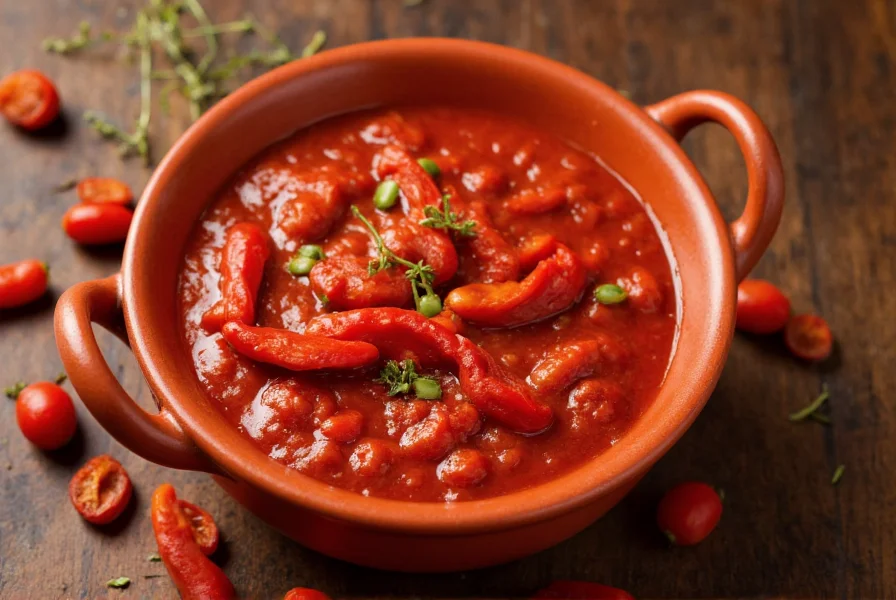When searching for \"chili chili\", most users encounter confusion due to repetitive typing or misunderstanding of proper culinary terminology. This article clarifies the correct usage, explores common chili varieties, and explains why this repetition occurs in search queries.
Understanding Chili Terminology Across Regions
The spelling \"chili\" versus \"chilli\" versus \"chile\" creates significant confusion worldwide. In American English, \"chili\" commonly refers to both the peppers and the dish. British English typically uses \"chilli\" for the peppers. \"Chile\" represents the original Spanish spelling, often used in Southwestern U.S. contexts. None of these terms are correctly doubled as \"chili chili\" in standard usage.

Common Chili Pepper Varieties Explained
Understanding genuine chili varieties helps distinguish them from the erroneous \"chili chili\" term. The Capsicum genus contains numerous species with varying heat levels measured in Scoville Heat Units (SHU):
| Chili Variety | Scoville Range | Common Uses |
|---|---|---|
| Bell Pepper | 0 SHU | Raw consumption, stuffed dishes |
| Jalapeño | 2,500-8,000 SHU | Salsas, nachos, pickled |
| Habanero | 100,000-350,000 SHU | Hot sauces, Caribbean cuisine |
| Ghost Pepper | 855,000-1,041,427 SHU | Extreme heat challenges, specialty sauces |
Chili Con Carne: The Dish Behind the Confusion
The stew known as chili con carne (literally \"chili with meat\") often gets shortened to \"chili\" in everyday conversation. This meat-based dish originating from Texas typically contains:
- Ground beef or cubed meat
- Chili peppers (ancho, guajillo, or cayenne)
- Tomatoes or tomato paste
- Beans (in some regional variations)
- Spices like cumin and garlic
When people mistakenly search for \"chili chili\", they're often seeking recipes for this classic American dish or information about the peppers used within it. Culinary experts recommend specifying whether you're searching for pepper varieties or recipe instructions to find more relevant information.
Restaurants Using \"Chili Chili\" in Their Name
While \"chili chili\" isn't a standard culinary term, several restaurants have adopted this name, particularly in Asia. These establishments typically serve:
- Asian-fusion interpretations of chili dishes
- Spicy noodle preparations
- Regional chili specialties from various cuisines
If your search for \"chili chili\" relates to a specific restaurant, including your city or region in the search query will yield more accurate results. Restaurant names sometimes create confusion with standard culinary terminology, leading to the repetitive search pattern.

Why People Search for \"Chili Chili\": Common Mistakes
Linguistic patterns explain why \"chili chili\" appears in search queries:
- Typing repetition: Users accidentally type \"chili\" twice when searching quickly
- Non-native speaker confusion: English learners sometimes double words for emphasis
- Memory errors: Misremembering restaurant names or product titles
- Voice search misinterpretation: Speech recognition errors creating doubled terms
Search engines have become adept at recognizing these patterns and automatically correcting them to provide relevant results for the intended \"chili\" query. Understanding proper terminology helps users find information more efficiently without relying on search engine corrections.
Practical Guidance for Accurate Chili Information
When researching chili-related topics, use these precise search strategies:
- For pepper varieties: \"types of chili peppers guide\" or \"mild to hot chili spectrum\"
- For cooking: \"authentic chili con carne recipe\" or \"Texas-style chili without beans\"
- For gardening: \"growing chili peppers in containers\" or \"best soil for chili plants\"
- For heat measurement: \"Scoville scale explained\" or \"how to reduce chili heat\"
These specific long-tail queries bypass the \"chili chili\" confusion and connect you directly with authoritative information from culinary experts and agricultural resources.











 浙公网安备
33010002000092号
浙公网安备
33010002000092号 浙B2-20120091-4
浙B2-20120091-4